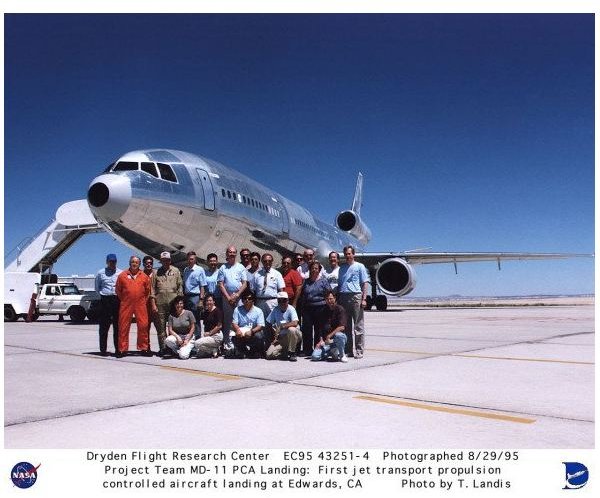How to Develop a Staffing Plan for Project Management: Part 1 of 2
Developing a staffing plan for project management involves selecting, assembling, and assigning work to a project team with the appropriate skill sets to meet the project deliverables identified during the project initiation stage. The staffing plan also needs to provide for any non-labor resources such as tools, equipment, or processes required by the project team to undertake the assigned tasks.
Initiation of the staffing plan for project management requires completion of the project schedule and task plan.
Image Credit: nasaimages.org
Determining Required Skills
The primary consideration of the staffing plan for project management is to determine the specific skill sets required for completing project deliverables. The staffing plan entails drawing up a time schedule for specific skill requirements based on the project schedule and task plan.
Skills Inventory
One important phase in developing a project management staffing plan is undertaking a skills inventory based on knowledge, skills, and abilities of the human resources of the organization and matching the same with the skill sets required. The staffing plan considers existing staff on payroll of the organization, staff on contract available when required, and new hires.
Reconciliation
The next step in developing a staffing plan for project management includes reconciling the required skills with existing skills. This entails having a clear understanding of the available staff in the organization and, if the availability meets the requirements, preparing a comprehensive schedule by assigning time-specified duties and responsibilities to the available staff.
Important considerations while reconciling the skills required with skills available within the organization include:
- Ascertaining the availability of the employee for the project. For instance, the organization might have a system network specialist in-house, but this employee might have another project during the required time, and hence not be available for the project in question.
- Accounting for leaves, vacations, flex schedules, and other staff absences or considerations.
- Understanding the hierarchy and location of the staff. For instance, a senior-level functional specialist skilled in civil engineering cannot fulfill the requirement of a basic welder, and a welder working in another branch might not be available for a project in another branch two states away.
If the talent available in the organization for the project does not satiate project requirements, the various options include:
- Negotiation with the person controlling the required resource, if such resource is deployed elsewhere.
- Providing training to existing employees to equip them for project requirements.
- Hiring new employees, either on a permanent or on a contract basis.
Staffing Profile

The staffing profile is a composition of the project team at any given point in the project life cycle.
Preparation of the staffing profile entails organization and documentation of the project team. It entails mapping tasks in the project plan to human resource availability and indicating other resources such as tools, testing labs, and training facilities required for the accomplishment of project tasks. It clearly defines the role of each member in the project.
The staffing profile ensures availability of the right people with the right skills at the right time. For instance, planners and project managers might dominate the project team during the start of the project, whereas the team would predominantly consist of designers and developers in the middle stages, and trainers or quality assurance evaluators may dominate the team at the end of the project life cycle. By allowing appropriate resource allotment as and when needed, the staffing profile helps keep the project’s critical path priorities on track.
The staffing profile needs to:
- Define the lines of authority, control, communication, and coordination among the project team. Leaving such things vague is the perfect recipe for chaos.
- Ensure that the way of using staff for the project complies with with established rules, policies, and personnel practices.
Image Credit: nasaimages.org
Best Practices
Developing a project management staffing plan works best by adopting some time-tested best practices.
- Any staffing plan remains an estimate with a fair amount of risk that the actual requirements might not conform to the plan owing to a variety of unforeseen events or miscalculations. This is especially true for large and complex projects. One common tactic to combat such a risk is to isolate such planning mistakes by breaking down the required staff into sub-teams or project sub-functions.
- Unexpected loss of key staff due to attrition, illness, or any other reason represents risk to the timely completion of deliverables and even completion of the project. A good rule of thumb is to make staff assignments with 20 percent contingency for such eventualities.
- Drawing staff from other departments is the default option for project staffing. Such staff, however, need not consider the project as top priority. The first preference should be for dedicated staffing. A solution to raise the interest of operational staff included in the project team is giving project assignments as development opportunities and allowing extra time for learning, but not at cost of delay of critical path activities.
- The most common form of organizing the project team is along managerial hierarchy and functional line of business. The best form of structure is matrix structure that allows team members to share information more readily across task boundaries.
Monitoring the staffing plan on a regular basis, especially the project team roles and responsibilities, and putting in place staff tracking controls guarantee that the staffing plan for project management remains relevant throughout the project life cycle.
Reference
- University of Wisconsin. Project Management Advisor. https://www.pma.doit.wisc.edu/plan/2-2/what.html
- Washington State Department of Information Services . Project Management Framework Planning - Staffing Plan. https://isb.wa.gov/pmframework/pmfplanning/staffing.aspx
